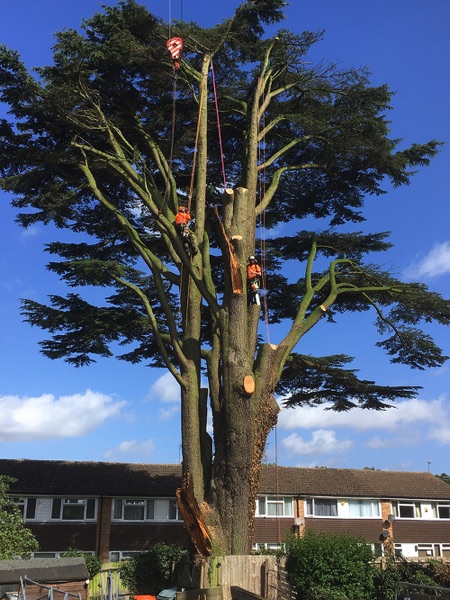What does a Tree Surgeon do
A tree surgeon is responsible for the care and general treatment of trees to keep them healthy. However it not only involves pruning existing trees that have overgrown to keep them healthy it also involves the planting of new stock and taking down trees to clear an area or because the tree itself is unsafe.
Tree surgeons have a great deal of different responsibilities and to carry out their job effectively they must be physically fit. All tree surgeons will use chainsaws and will be fully trained in their use and what protective clothing will need to be used.
Tree Inspections
 A tree surgeon will look at trees to carry our hazard assessments to investigate the potential danger of each tree and its general health. This inspection allows them to decide on what work needs to be carried out and on public sites it is vital that it is carried out regularly. This is to safeguard the public and ensure that safety is paramount. On private sites an inspection by a tree surgeon will be carried out with the customer and will involve discussion on what work the customer would like to be carried out, what the estimated cost will be and the amount of disruption that is likely to be involved.
A tree surgeon will look at trees to carry our hazard assessments to investigate the potential danger of each tree and its general health. This inspection allows them to decide on what work needs to be carried out and on public sites it is vital that it is carried out regularly. This is to safeguard the public and ensure that safety is paramount. On private sites an inspection by a tree surgeon will be carried out with the customer and will involve discussion on what work the customer would like to be carried out, what the estimated cost will be and the amount of disruption that is likely to be involved.
Removing Dead Branches
Trees with dead or weak branches will need to be pruned as the overall health off the tree will likely be suffering. A good tree surgeon will understand what branches will be better to be removed and those that can be left and will climb the tree to safely remove those branches.
Removing dead or weak branches should improve the trees health and in the case of a tree that is struggling it can help stop it from collapsing. The use of chainsaws and other sharp equipment while suspended in the air is potentially a dangerous process and so experienced tree surgeons will take no risks with their health.
Tree Safety First
A good tree surgeon will be physically fit and will always climb a tree using the correct safety equipment and they will never climb a tree without using a safety harness and helmet. A busy tree surgeon will have to climb tall trees regularly and must have the strength to complete the job without endangering themselves or their colleagues.
Removing a Tree
Although a tree surgeon will do all they can to save a tree, in the interests of public safety sometimes there is no choice but to take down the tree. In the case of larger trees this can of course be a dangerous job as there will be a process for removing the tree which will involve several stages.
Usually the climber will situate themselves in the tree and will proceed to take off the branches at the top of the tree working their way down the trunk until all the branches have been removed.
There will be several people involved with the job and a team on the ground under the tree will ensure the safety of the public and some will possibly be shredding the branches as they are removed to keep the ground clear as the work is completed.
Once the branches are removed the climber will usually work their way down the tree safely cutting the trunk above them as they come down. This will leave a stump which will need to be removed.
Vegetation Clearance
The ultimate step from removing a tree is vegetation site clearance and is usually used where a site must be prepared for larger development or land management projects. This process will leave a site completely clear of trees and vegetation.
Stump removal
Stumps can be difficult to remove but there are specialist tools available to tree surgeons that can be used to grind down a stump so that it can be removed.
Planting New Trees
Tree surgeons don’t only prune or remove trees and if you are looking for professional help in planting new trees to give them the best possible start in life then you should think of the tree surgeon. They have the knowledge needed to ensure that the plants are put into the ground properly and has all the help it needs to thrive. Putting trees into the ground can involve the use of cables, supports and heavy machinery to ensure that the tree goes into the ground properly.

